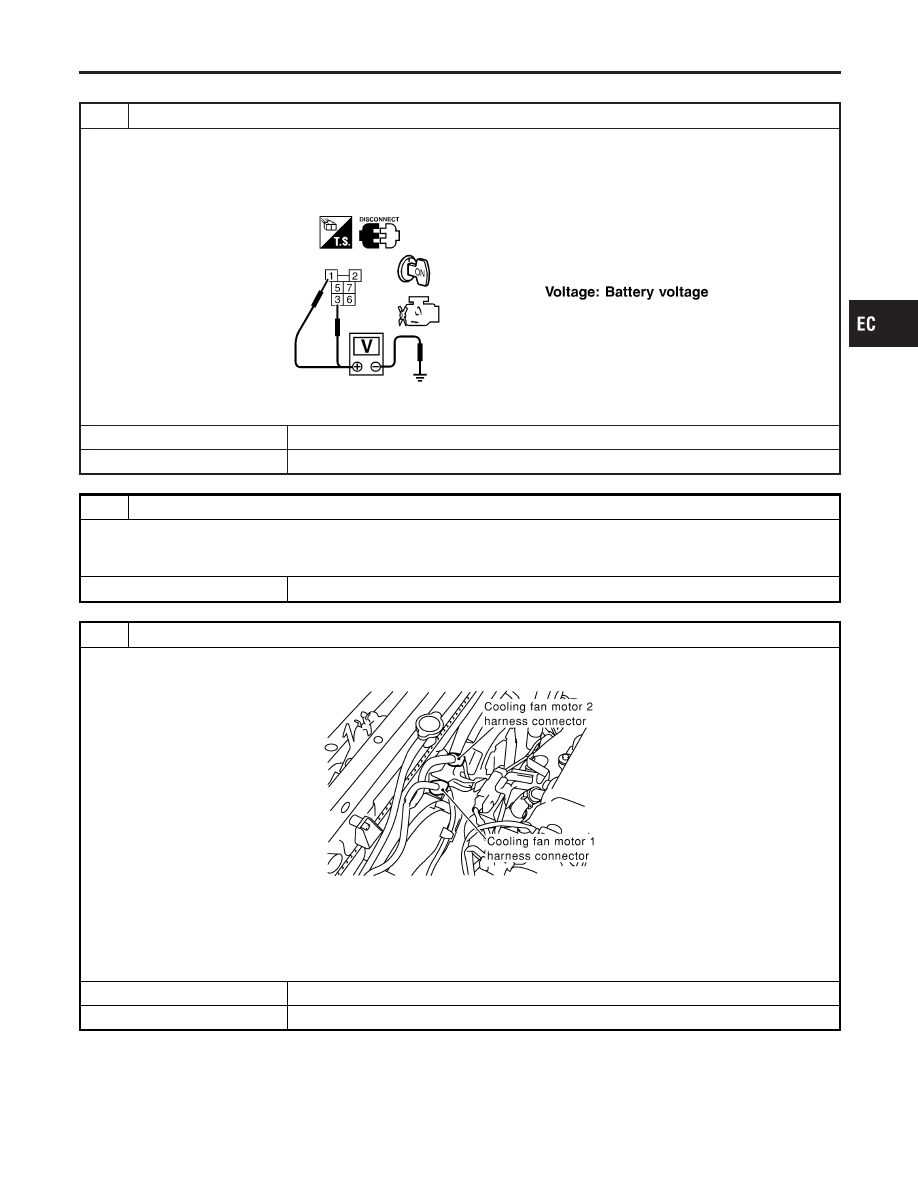Infiniti G20 (P11). Manual - part 227

PROCEDURE B
=NCEC0672S02
1
CHECK COOLING FAN POWER SUPPLY CIRCUIT
1. Turn ignition switch “OFF”.
2. Disconnect cooling fan relay-2.
3. Turn ignition switch “ON”.
4. Check voltage between cooling fan relay-2 terminals 1, 3 and ground with CONSULT-II or tester.
SEC577C
OK or NG
OK
©
GO TO 3.
NG
©
GO TO 2.
2
DETECT MALFUNCTIONING PART
Check the following.
I
Harness for open or short between cooling fan relay-2 and fuse
I
Harness for open or short between cooling fan relay-2 and fusible link
©
Repair harness or connectors.
3
CHECK COOLING FAN MOTOR CIRCUIT FOR OPEN AND SHORT
1. Turn ignition switch “OFF”.
2. Disconnect cooling fan motor-1 harness connector.
SEF854X
3. Check harness continuity between cooling fan relay-2 terminal 5 and cooling fan motor-1 terminal 2, cooling fan relay-2
terminal 6 and cooling fan motor-1 terminal 3, cooling fan relay-2 terminal 7 and body ground. Refer to Wiring Diagram.
Continuity should exist.
4. Also check harness for short to ground and short to power.
OK or NG
OK
©
GO TO 4.
NG
©
Repair open circuit or short to ground or short to power in harness or connectors.
GI
MA
EM
LC
FE
CL
MT
AT
AX
SU
BR
ST
RS
BT
HA
SC
EL
IDX
DTC P0217 COOLANT OVERTEMPERATURE ENRICHMENT PROTECTION
Diagnostic Procedure (M/T Models) (Cont’d)
EC-319